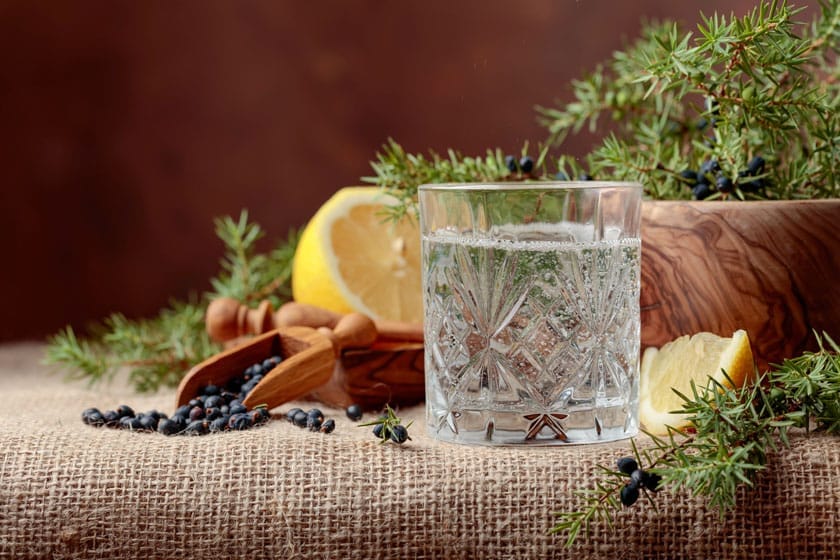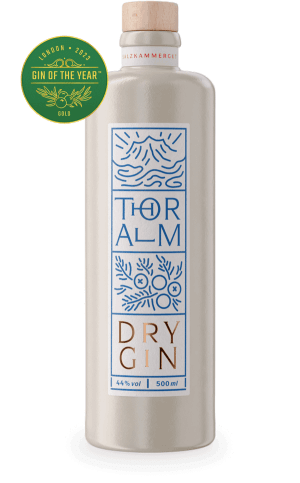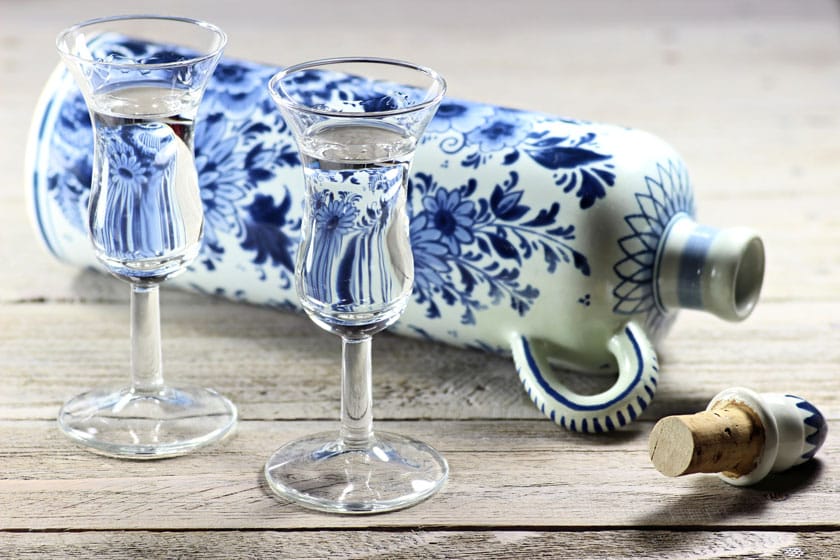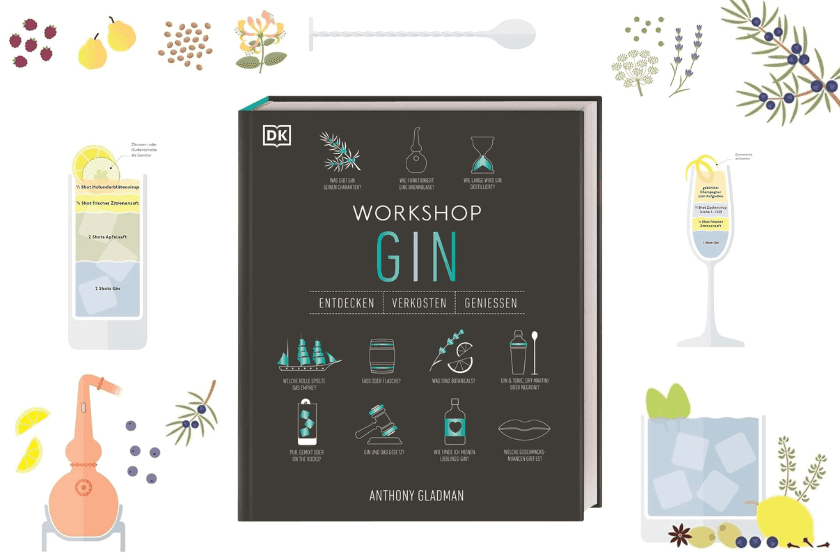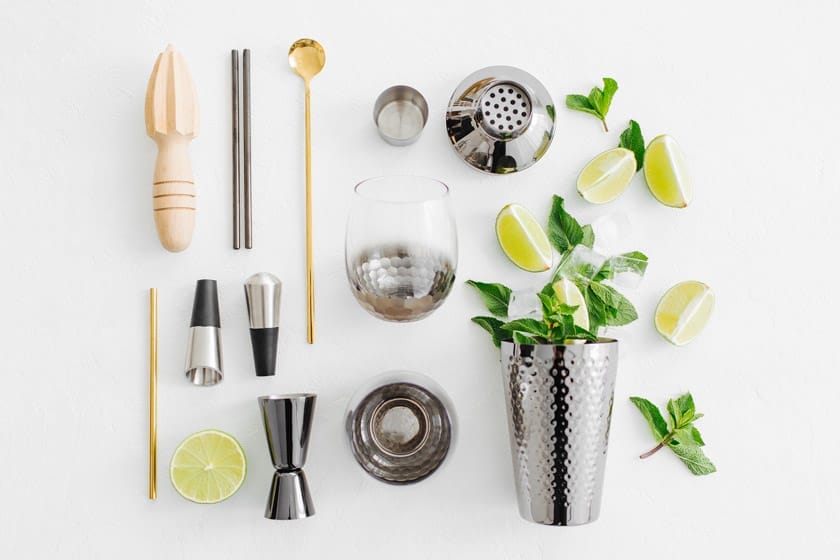Gin has been experiencing an impressive renaissance in modern bar culture for several years. What was once considered a classic ingredient in a few cocktails has developed into a versatile and popular drink that no well-stocked bar should be without. The enthusiasm for experimentation of distilleries and bartenders has meant that gin is now available in countless variations.
The gin flavor is as varied as the botanicals used in its production. From strong juniper notes to refreshing citrus aromas and exotic spices - gin offers an exciting spectrum of flavor profiles. In this article, we would like to introduce you to the fascinating world of gin and show you how you can discover your personal favorite.
1. The basis of the gin taste
Juniper as the heart
The unmistakable gin flavor begins with a crucial ingredient: juniper berries. They are the heart and soul of every gin and are required by law to classify a distillate as gin. Juniper gives gin its characteristic aromas of resinous, slightly sweet and spicy notes, often reminiscent of pine needles and forest. These berries provide the fresh, aromatic base on which all other flavor nuances are built.
The intensity of the juniper flavour can vary from gin to gin. In traditional varieties it clearly dominates, while modern interpretations use it more subtly to make room for other flavours. But without juniper, the typical gin flavor unthinkable.
Botanicals and their role
In addition to juniper, a variety of botanicals the individual gin flavorBotanicals are plant-based ingredients such as herbs, spices, fruits and flowers that impart their aromas to the gin during distillation. The selection and combination of these ingredients allows distillers to create unique flavor profiles.
Commonly used botanicals and their flavor influences:
- citrus fruits: Peels of lemons, oranges or grapefruits bring fresh, sparkling notes and enhance the lightness of the gin.
- coriander seeds: Adds a spicy warmth to the gin with subtle citrus nuances that complement the juniper.
- angelica and iris root: Provide earthy tones and serve as a natural flavor fixer that maintains the balance of flavors.
- cardamom and cinnamon: Add exotic, warm spice notes that give the gin depth.
- peppercorns: Bring a subtle spiciness and piquant accents to the gin flavor.
- lavender, chamomile and rose petals: Complement floral notes and give the gin a fragrant, soft character.
- Exotic ingredients: Botanicals such as cucumber, rose petals, hibiscus or even unusual ingredients such as algae or truffles offer innovative taste experiences.
The art of gin making lies in combining these botanicals in perfect harmony. Each gin has its own recipe, often a well-kept secret that gin flavor The careful selection and dosage of botanicals creates a complex play of aromas that makes gin so appealing.
Our THORALM Dry Gin uses this variety of botanicals to create a balanced yet characterful gin flavor With a harmonious balance of traditional and modern ingredients, we create a taste profile that delights both connoisseurs and newcomers.
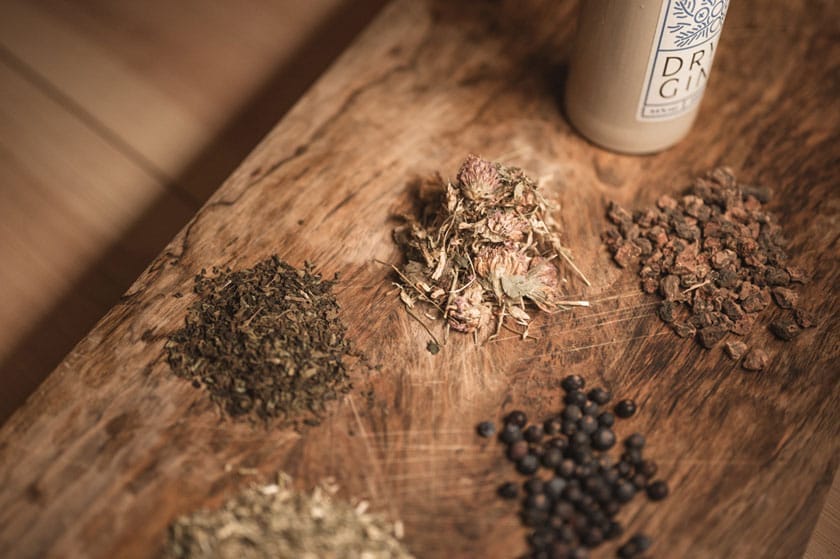
2. Different gin styles and their flavor profiles
London Dry Gin
London Dry Gin is probably the best known and most traditional style of gin. Despite its name, it does not have to be produced in London. This gin is characterized by its dominant juniper notes, which are complemented by a dry and clear taste. It is produced by distilling all the botanicals once, without the addition of any flavors or sweeteners.
Typical flavors of London Dry Gin include:
- juniper: Dominates the flavor profile with resinous and slightly sweet notes.
- citrus fruits: Lemon and orange peels add freshness and lightness.
- coriander seeds: Add a spicy warmth with delicate citrus nuances.
- angelica root: Provides earthy tones and harmonizes the different aromas.
The gin flavor The London Dry Gin is therefore classic, dry and straightforward, ideal for traditional cocktails such as the Gin Tonic or the Martini.
New Western Dry Gin
The New Western Dry Gin, also known as Contemporary or New Wave Gin, represents the modern interpretation of gin. Here, the juniper notes take a back seat in favor of other botanicals. Distilleries experiment with exotic ingredients and create innovative flavor profiles.
Features of the New Western Dry Gin:
- botanical diversity: Use of unusual ingredients such as lavender, cucumber, rose petals or spices from all over the world.
- balance: Juniper is still present, but not dominant.
- creativity: Each gin is unique and often reflects the regional origin or the philosophy of the distiller.
The gin flavor The New Western Dry Gin can be floral, fruity or even spicy, which opens up new possibilities in mixology and makes it ideal for modern cocktails.
Old Tom Gin
Old Tom Gin is a historic gin variant that was popular in the 18th and 19th centuries and is currently experiencing a revival. It is characterized by a slight sweetness that sets it apart from other gin styles.
Special features of Old Tom Gin:
- sweetness: Is achieved by adding sweeteners such as sugar or by using sweet botanicals.
- The taste: Combination of traditional juniper notes with sweeter, softer flavors.
- use: Ideal for classic cocktails such as the Tom Collins or the Martinez.
The gin flavor Old Tom Gin is milder and rounder, which means it can also be enjoyed neat and is easier for beginners to access.
Sloe Gin
Sloe Gin is not actually gin in the classic sense, but a gin-based liqueur. It is made by soaking sloe berries (English: sloe berries) in gin, often with the addition of sugar.
Characteristics of Sloe Gin:
- fruitiness: Intense aroma of sloes with a pleasant sweetness.
- Color: Deep red to ruby red due to the coloring of the berries.
- alcohol content: Lower than classic gin, usually between 20-30% ABV.
The gin flavor The Sloe Gin is sweet, fruity and slightly tart, ideal as a digestif or in cocktails such as the Sloe Gin Fizz.
This variety of gin varieties shows how multifaceted the gin flavor Whether classic and dry, modern and experimental, sweet or fruity - there is a gin to suit every palate. Discover the different characters and find your favorite.
3. How does the taste in gin develop?
Distillation process: How does the production process affect the taste?
The gin flavor is significantly influenced by the distillation process. production of gin There are different methods, the most common being pot still distillation and column still distillation.
- pot still distillation: The botanicals are heated directly in the still with the neutral alcohol. The rising alcohol vapors absorb the aromas of the botanicals. This process makes it possible to create intense and complex flavor profiles because the aromas are gently extracted.
- column still distillation: This method involves passing the alcohol through a column with the botanicals arranged in different levels. This results in a purer distillate with lighter flavors.
The temperature, pressure and duration of distillation also play a crucial role. Slow distillation at low temperatures allows for the extraction of finer aromas and avoids undesirable flavours. By carefully controlling the distillation process, distilleries can gin flavor precisely control and achieve the desired taste profile.

Influence of Botanicals: Detailed consideration of how individual ingredients change the final product
The selection and combination of botanicals are the heart of the gin flavorEach botanical brings its own aromas and nuances that together form the final flavor profile.
- citrus fruits (lemon, orange, grapefruit peel): Give the gin freshness and a sparkling note. They emphasize the lightness of the gin and, depending on the amount, can make the juniper fade into the background.
- coriander seeds: Add spicy and slightly nutty flavors, often with subtle citrus undertones. They complement the juniper and provide a harmonious balance.
- angelica and iris root: Act as natural fixatives that reduce the volatility of the other flavours. They bring earthy notes and give the gin body and depth.
- spices (cardamom, cinnamon, nutmeg): Bring warmth and complexity. Cardamom, for example, can add sweet and spicy tones, while cinnamon provides a subtle sweetness.
- peppercorns (black, pink, cubeb pepper): Add spiciness and piquant accents. They can give the gin an interesting spiciness that is noticeable in the finish.
- flowers and herbs (lavender, chamomile, rosemary, thyme): Add floral and herbaceous notes. They can give the gin softness and an aromatic scent.
- Exotic ingredients (cucumber, rose petals, hibiscus, seaweed): Create unique and innovative flavors. These botanicals can give the gin a modern twist and enable new taste experiences.
The trick is to combine the botanicals in such a way that they create a balanced and harmonious overall picture. Too much of one ingredient can gin flavor dominate and disrupt the balance. Therefore, precision and experience in recipe development are essential.
In our THORALM Dry Gin We rely on a careful selection of botanicals to create a unique gin flavor The harmonious combination of juniper, selected citrus fruits and fine spices creates a complex yet balanced taste profile that is convincing both neat and in cocktails.
Barrel storage: How rare barrel-aged gins get additional flavor nuances
A special method, the gin flavor is barrel aging. Although this is less common with gin than with whisky or rum, the practice is becoming increasingly popular.
- Wood species and their influences: Gins can be stored in different wooden barrels, for example oak, sherry or wine barrels. Each type of wood brings its own aromas, such as vanilla, caramel or roasted aromas.
- maturation process: During storage, the gin absorbs the flavors of the wood. This can give the gin additional depth and complexity. Notes of honey, spices or dried fruit can emerge.
- duration of storage: The maturation time varies depending on the desired flavor profile. Some gins are aged for just a few months, others for several years. Longer storage intensifies the wood flavors, but should be carefully monitored to avoid over-aging.
- change in colorBarrel-aged gin often takes on a golden to amber hue, which also visually distinguishes it from unaged gins.
The use of barrel storage opens up new possibilities for gin flavor and create unique products. Barrel-aged gins are ideal for pure enjoyment or as a special ingredient in selected cocktails.
The creation of the gin flavor is a complex process that is influenced by many factors. From the distillation process to the selection of botanicals and possible barrel storage - every step offers the chance to shape the character of the gin and create unique flavors. This interplay of art and science makes gin one of the most versatile and exciting spirits in the world.
4. Find your own taste
Tasting tips: Instructions on how to taste gin properly and recognize the aromas
To the gin flavor in all its diversity, it is worth tasting gin consciouslyHere are some steps and tips to help you:
- Preparation
- glass selection: Use a tulip-shaped glass or a nosing glass that tapers towards the top. This concentrates the aromas and makes it easier to smell.
- Vicinity: Create an odor-free environment without strong scents that could affect your perception.
- neutralization: Have still water and unsalted crackers ready to neutralize the palate between tastings.
- Visual Analysis
- Color: Watch the color of the gin. Most are clear, but barrel-aged or flavored gins may have a slight tint.
- clarity: Look for cloudiness or particles that may indicate certain botanicals or manufacturing processes.
- Explore Aroma
- First impression: Hold the glass a few centimeters from your nose and breathe in gently.
- Deeper smelling: Slowly approach the glass and take several short puffs to perceive the different scents.
- taking notes: Identify the main aromas such as juniper, citrus, spices or floral notes and write down your impressions.
- The taste
- Small sip: Take a small sip and let the gin roll over your tongue to stimulate all your taste buds.
- analysis: Pay attention to the sweetness, acidity, bitterness and umami elements. Which botanicals come to the fore?
- mouthfeel: Pay attention to the texture – is the gin smooth, oily or spicy?
- departure
- aftertaste: Observe which flavors remain after swallowing. Is the finish long or short? Do certain flavors linger longer?
- balance: Assess how harmoniously the different elements work together.
- Comparison
- Several gins: Compare different gins side by side to see the differences in gin flavor to understand better.
- discussion: Exchange ideas with others to discover different perceptions.

Gin and Tonic Variations: How the Tonic Water and the Garnish Influence the Taste
The Gin Tonic is a classic, but the choice of tonic and garnish can make the gin flavor change significantly.
- tonic water selection
- Classic Tonic Water: Has a pronounced bitterness due to quinine and complements traditional gins perfectly.
- Flavored tonics: Variants with aromas of elderflower, Mediterranean herbs or citrus fruits can highlight certain botanicals in the gin.
- Indian Tonic: Slightly sweet and spicy, goes well with strong gins.
- Dry or Light Tonic: Less sweet and lower in calories, ideal for gins with more subtle flavors.
- garnish
- citrus fruits: Lemon, lime, orange or grapefruit slices emphasize the citrus notes.
- Herbs: Rosemary, thyme, basil or mint add fresh herbal notes.
- Spices: Juniper berries, peppercorns or star anise add depth.
- exotic: Cucumber slices, berries or ginger for special accents.
Tips for the perfect Gin Tonic
- Relationship: Start with a ratio of 1 part gin to 3 parts tonic water and adjust to taste.
- Ice: Use lots of ice – large, clear ice cubes melt more slowly and dilute the drink less.
- Construction: First pour the gin into the glass, add the ice, then carefully pour the tonic water over the back of a spoon to maintain the carbonation.
- Experiment: Try different combinations of gin, tonic and garnish to find your personal favorite.
Cocktail recommendations: Suggestions for cocktails that highlight certain flavor profiles
Discover different cocktails that gin flavor present in different ways:
- Martini
- Ingredients: 60 ml gin, 10 ml dry vermouth.
- preparation: Stir the ingredients over ice until cold and strain into a chilled martini glass.
- set: Lemon zest or green olive.
- The taste: Emphasizes the purity and elegance of the gin, ideal for gins with clear juniper notes.
- Negroni
- Ingredients: 30 ml gin, 30 ml Campari, 30 ml sweet red vermouth.
- preparation: Mix all ingredients over ice and strain into a glass filled with ice.
- set: Orange zest.
- The taste: Bitter-sweet and complex, ideal for gins with a strong character.
- Tom Collins
- Ingredients: 50 ml gin, 25 ml lemon juice, 15 ml sugar syrup, soda water.
- preparation: Pour gin, lemon juice and syrup into a glass with ice, top up with soda water and stir.
- set: lemon slice and cocktail cherry.
- The taste: Refreshing and sparkling, highlights the citrus notes.
- French 75
- Ingredients: 30 ml gin, 15 ml lemon juice, 10 ml sugar syrup, champagne or sparkling wine.
- preparation: Shake gin, lemon juice and syrup, strain into a champagne glass and top up with champagne.
- set: Lemon zest.
- The taste: Elegant and sparkling, combines the botanicals of gin with the freshness of sparkling wine.
- Gin Basil Smash
- Ingredients: 50 ml gin, 25 ml lemon juice, 15 ml sugar syrup, a handful of fresh basil.
- preparation: Press the basil into the shaker, add the remaining ingredients with ice and shake vigorously. Strain into a glass with ice.
- set: Basil leaf.
- The taste: Herbal fresh and aromatic, ideal for gins with floral notes.
- Bee's Knees
- Ingredients: 50 ml gin, 20 ml lemon juice, 20 ml honey syrup.
- preparation: Shake all ingredients with ice and strain into a chilled glass.
- set: Lemon zest.
- The taste: Sweet and citrusy, the honey underlines the softer botanicals.
By trying these cocktails, you can discover which flavor profiles appeal to you the most. You may even discover new facets of gin flavorthat you have not noticed before.
Our tip: With our THORALM Dry Gin you can take all these cocktails to a new level. Its balanced mix of classic and innovative botanicals makes it the ideal basis for a variety of creations. Try it out and find your personal favorite!
5. The unique taste of THORALM Dry Gin
Our Botanicals
Our THORALM Dry Gin is made exclusively from seven local alpine herbs and pure mountain spring water. These herbs grow directly on the Thoralm in the beautiful Salzkammergut at an altitude of 1,400 meters and are harvested by hand. The carefully selected botanicals are:
- mountain juniper: Gives the gin its classic juniper note with a special alpine freshness.
- bloodroot: Adds earthy and slightly bitter nuances that give the gin depth.
- ribwort plantain: Brings subtle, herbaceous flavors.
- yarrow: Complements floral and slightly spicy tones.
- nettle: Provides a fine green note and subtle spiciness.
- lemon balm: Provides a natural lemon note without the use of citrus fruits.
- red clover: Adds sweet and floral nuances.
flavor profile
The THORALM Dry Gin is characterized by its unique taste, which is characterized by the rare alpine herbs. The classic juniper note harmonizes with earthy, floral and spicy nuances of the local herbs. The lemon balm brings a subtle freshness, while the combination of tormentil and yarrow gives the gin depth and complexity. The finish is soft and long-lasting, with a pleasant warmth and herbal aromas that invite you to continue enjoying it.
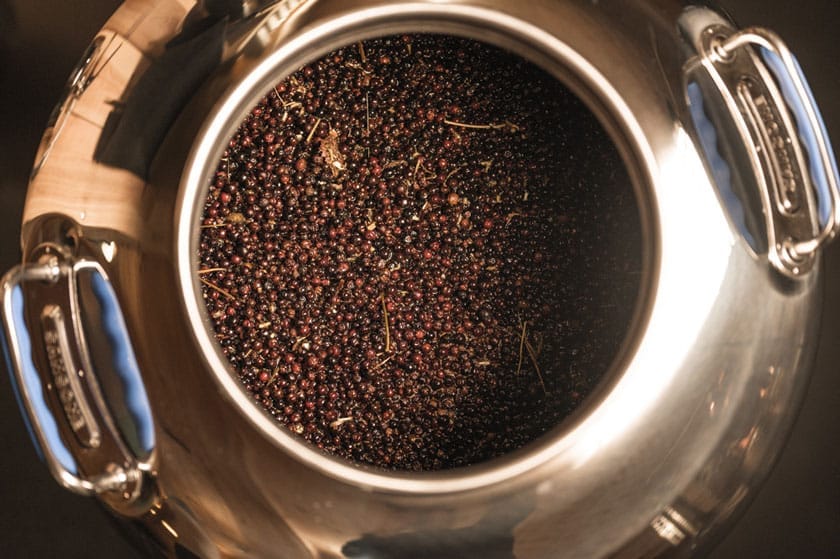
What makes us special
At THORALM Honest craftsmanship and a connection to nature are the focus. All work steps are done by hand, from harvesting the herbs to bottling the gin. We use a 125-litre pot still distillery made especially for us and deliberately work without an aroma basket or similar aids. This way we ensure that the pure taste of the alpine herbs comes through in every drop of our gin.
Our philosophy is to create an authentic product – not just in taste, but in the entire manufacturing process. We source all materials as regionally as possible:
- wooden boxes: Manufactured in the nearby Scheffau wood factory in Abtenau.
- distillery: Manufactured by the Tyrolean coppersmith Schmidt.
- bottles and corks: Regionally handmade, not imported from overseas.
The water for our gin comes from our own spring, which rises directly on the Thoralm from the limestone mountains of the Postalm massif. This mineral-rich and primeval water gives our gin additional depth and character.
We didn't want to create another New Western Dry Gin with common botanicals like citrus or rosemary. Instead, we decided to develop an honest product that reflects our homeland and its natural treasures. Our THORALM Dry Gin is a sip of peace – perfectly distilled for your time out.
We invite you to our THORALM Dry Gin to discover and be inspired by its unique gin flavor Whether neat, on ice or in your favorite cocktail – experience gin in its finest form.
6. Gin and food – the perfect pairing
Combinations with appetizers: Which snacks go with which gin?
A successful gin pairing starts with the appetizer. The diverse aromas of the gin combine excellently with various snacks and small dishes. Here are some recommendations:
- Mediterranean tapas: Olives, dried tomatoes and marinated artichokes harmonize wonderfully with gins that have a strong juniper note and citrus accents. They underline the freshness and lightness of the gin flavor.
- Seafood: Smoked salmon, shrimp cocktails or oysters go perfectly with floral and citrus gins. The salty notes of the seafood create an interesting contrast to the fresh aromas of the gin.
- Cheese variations: Soft cheeses like Brie or Camembert complement gins that have a gentle herbal note. Hard cheeses like Manchego or Parmesan pair well with spicier gins with complex flavor profiles.
- Antipasti platters: A selection of fine ham, salami and pickled vegetables offers a wide range of combination options. Gins with herbal and spicy notes are particularly good here.
Main courses and gin: How to integrate gin into menus
Gin can not only be drunk, but also used as an ingredient in the kitchen. Its unique flavors offer exciting possibilities to refine main dishes.
- Gin-cured salmon: By curing fresh salmon with our THORALM Dry Gin, dill and lemon zest give the fish a special aroma that gin flavor integrated in a subtle way.
- Gin-infused sauces: A cream sauce with a dash of gin and green peppercorns adds depth and sophistication to poultry or veal dishes. The herbal aromas of our gin complement the meat perfectly.
- Marinades for meat: Marinate chicken or pork in a mixture of gin, honey, soy sauce and fresh herbs. The meat absorbs the flavors and becomes particularly tender and flavorful.
- Vegetarian dishes: Risotto with gin and asparagus or pasta with a gin and lemon sauce offer vegetarian connoisseurs a special taste experience. The herbal and citrus notes of the gin harmonize perfectly with vegetable dishes.
Desserts with Gin: Ideas for sweet dishes that complement the gin taste
Gin can also be used creatively in desserts. The combination of sweet and aromatic components opens up new dimensions of enjoyment.
- Gin Tonic Sorbet: A refreshing sorbet made from gin, tonic water and lime juice is the perfect end to a summer menu. It emphasises the freshness and lightness of the gin flavor.
- Gin-infused fruits: Berries or citrus fruits marinated in gin and a little sugar are ideal as a topping for desserts or as a sweet dish on its own.
- Gin Cheesecake: A creamy cheesecake with a hint of gin and lemon balm gives the classic dessert a sophisticated touch. The herbal aromas of our THORALM Dry Gin give the cake special depth.
- Chocolate truffles with gin: Fine dark chocolate pralines filled with a ganache made from cream and gin offer an intense moment of enjoyment. The combination of dark chocolate and the spicy notes of the gin is a real treat for the palate.
Enjoy combining with THORALM Dry Gin
The combination of gin and food opens up a world of culinary possibilities. With our THORALM Dry Gin bring the purity and originality of the Alps to your plate and into your glass. Try our recommendations and discover new facets of gin flavor.
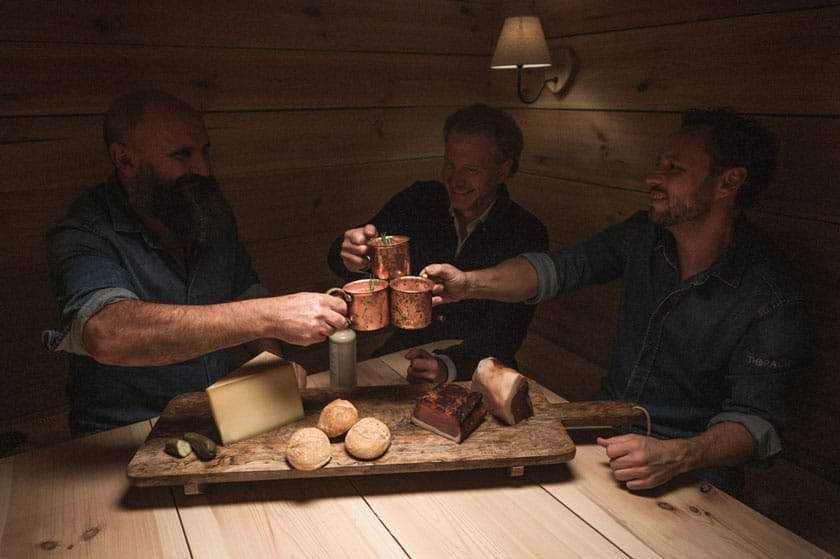
7. Trends and developments in gin taste
Regional influences: How gins from different countries have different flavors
The gin flavor is largely shaped by regional influences. Distilleries around the world use local botanicals to give their gins a unique flavor. This diversity reflects the cultural and landscape differences of the respective countries of origin.
- British gin: Traditionally characterized by strong juniper notes and classic botanicals such as coriander and angelica root. The London Dry Gin is the flagship product here and stands for a clear, dry taste.
- German Gin: Many German distilleries rely on local botanicals such as spruce needles, elderflowers or regional herbs. This results in gins with fresh, often floral or herbal flavor profiles.
- Spanish gin: Known for its experimental spirit, Spanish gins often incorporate Mediterranean ingredients such as olives, almonds or citrus fruits, resulting in warm and aromatic notes.
- Japanese gin: Uses exotic botanicals such as yuzu, sakura blossoms or green tea. These gins are characterized by subtle, elegant flavors that complement the traditional gin flavor enrich with Far Eastern influences.
- Australian gin: Uses native botanicals such as lemon myrtle, Tasmanian pepper or eucalyptus, creating unique and often bold flavor profiles.
These regional interpretations show how diverse the gin flavor can be and invite you to discover the world of gin on a culinary journey.
Experimental Gins: Introduction of gins with unusual botanicals such as algae or exotic fruits
The enthusiasm for innovation in gin production has led to the creation of experimental gins that offer new taste experiences with unusual botanicals.
- algae gin: Some distilleries use marine algae such as seaweed to incorporate maritime notes. These gins have a salty, mineral note reminiscent of a fresh sea breeze.
- Exotic fruits: Gins with botanicals such as passion fruit, dragon fruit or papaya bring tropical aromas into the glass and give the gin a fruity sweetness.
- mushrooms and truffles: The use of ingredients such as shiitake mushrooms or black truffles results in earthy, umami-like flavors that enhance the gin flavor expand in unusual ways.
- flowers and herbs: Gins with botanicals such as rose petals, lavender or hibiscus offer floral aromas and an appealing color that are convincing both in terms of taste and appearance.
- spices from all over the world: Sichuan pepper, turmeric or cocoa beans are examples of exotic spices used in modern gins to create complex and versatile flavor profiles.
These experimental gins show how creative and diverse gin production can be. They invite connoisseurs to discover new flavors and broaden their horizons.
The future of gin: where is the taste trend heading?
The gin market is dynamic and constantly changing. Current trends and possible developments in gin flavor are:
- Local and sustainable production: An increased focus on regional ingredients and environmentally friendly manufacturing processes reflects the growing awareness of sustainability. Consumers value gins that tell a story and emphasize their origins.
- Non-alcoholic gins: With the trend towards conscious consumption, alcohol-free or low-alcohol gins are becoming increasingly popular. They make it possible to enjoy the typical gin flavor without alcohol and open up new possibilities for cocktails.
- Personalized Gins: The ability to create your own gin or select personalized botanicals is becoming increasingly popular. Distilleries offer workshops or kits that allow you to make your own individual gin.
- fusion of spirits: Combining gin with other spirits or maturing it in special barrels (e.g. whisky, wine or rum barrels) results in innovative flavour profiles and expands the boundaries of classic gin.
- transparency and authenticity: Consumers are increasingly placing value on transparent production processes and authentic brands. Distilleries that communicate openly about their methods and ingredients gain the trust of customers.
The future of gin promises continued diversity and innovation. gin flavor will continue to evolve through experimental botanicals, new production processes and a stronger integration of regional elements. For gin lovers, this means an exciting time full of new discoveries and taste experiences.
With these developments, gin remains one of the most exciting and versatile spirits in the world. Whether classic, regional or experimental – the gin flavor offers something special for every palate. We at THORALM We look forward to being part of this dynamic scene and to continuing to offer you unique gin experiences in the future.
Conclusion
The world of gin is as diverse as it is fascinating. We encourage you to try different gins and embark on a journey of taste discovery. Each gin tells its own story and offers a unique play of flavors. By getting to know different styles and flavor profiles, you will find your personal favorite and expand your enjoyment horizons.
We cordially invite you to visit our THORALM Dry Gin and let its unique taste convince you. Immerse yourself in the purity and originality of the Alps that we have captured for you in every bottle. Whether pure, as a classic gin and tonic or in creative cocktail variations - our gin offers you a special enjoyment experience.
Visit us at the Thoralm or in our online shop and let yourself be inspired by the quality and character of our gin. We look forward to accompanying you on your gin journey. Cheers!
-

DRY GIN in gift box 500ml
72,00 €14,40 € / 100 ml
incl. 20% VAT
plus shipping costs
Product contains: 500 ml
Add to cart -

THORALM DRY GIN 500ml
59,90 €11,98 € / 100 ml
incl. 20% VAT
plus shipping costs
Product contains: 500 ml
Add to cart -

THORALM DRY GIN 6 x 500ml
339,40 €11,31 € / 100 ml
incl. 20% VAT
plus shipping costs
Product contains: 3000 ml
Add to cart
Photos: Igor Normann / stock.adobe.com; THORALM
